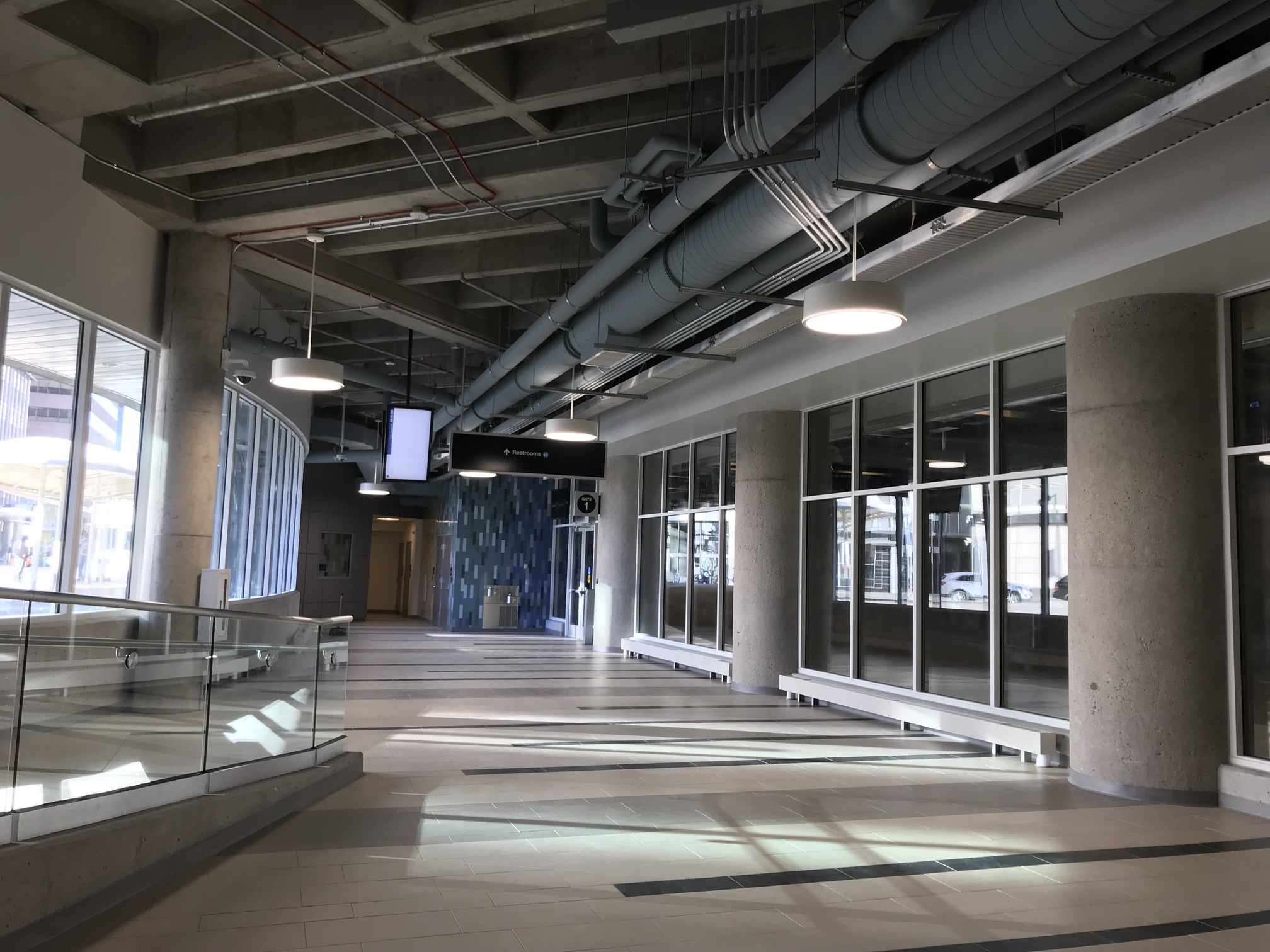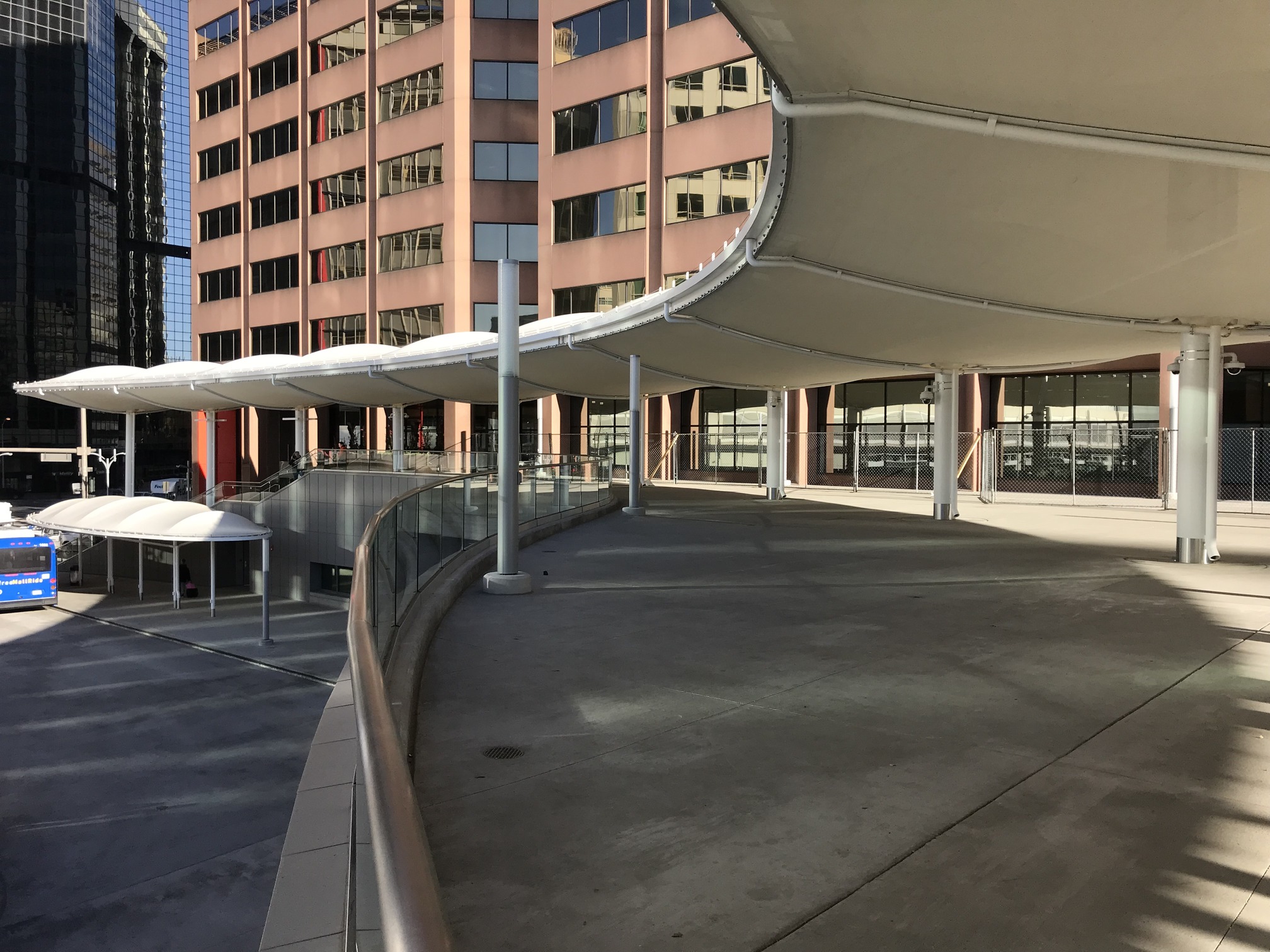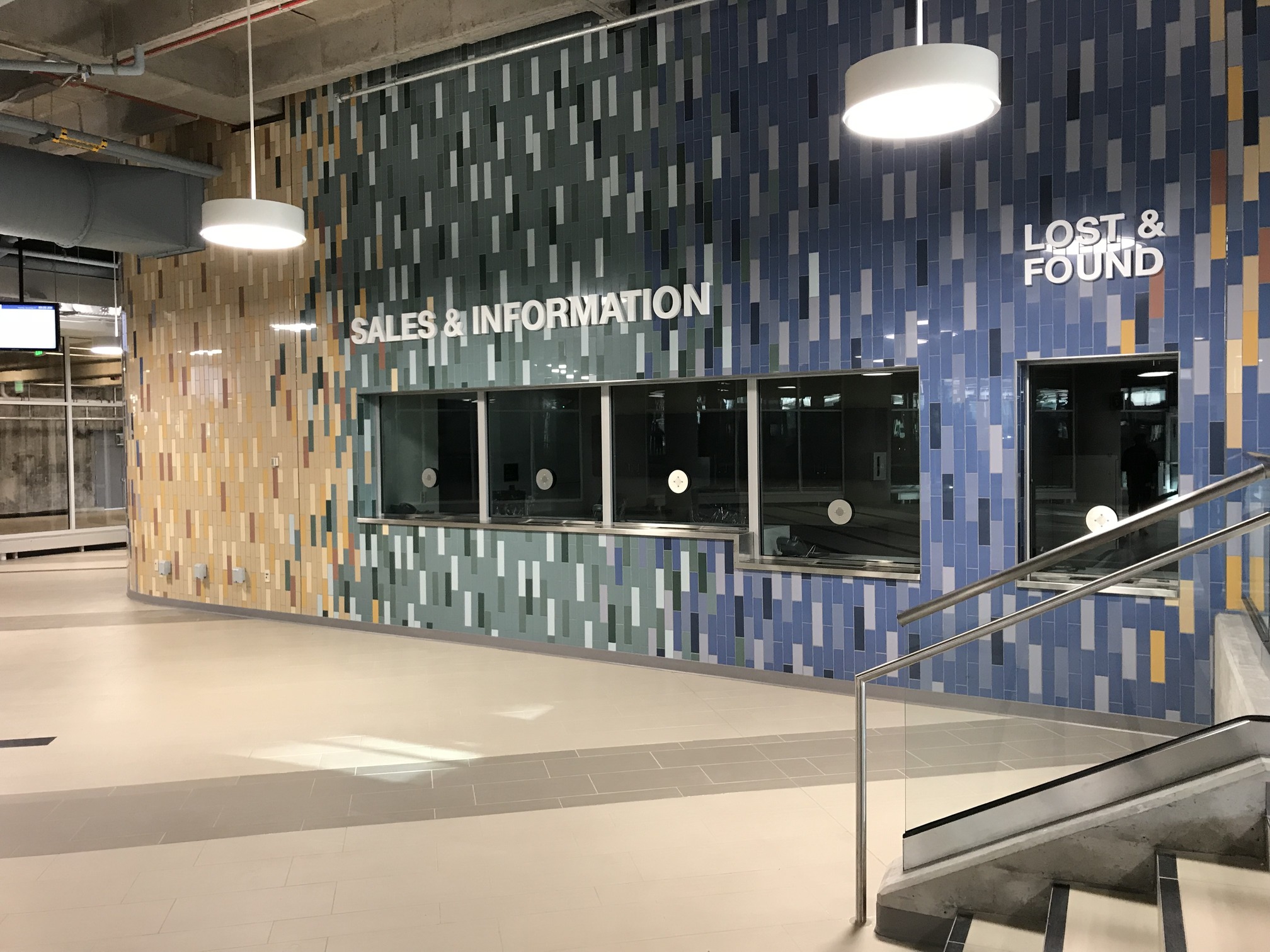The Local newsletter is your free, daily guide to life in Colorado. For locals, by locals.
After nearly a year-and-a-half of construction, Denver’s Civic Center Station will reopen to the public and begin operations this Sunday. RTD began formally drafting what would become an approximately $31 million renovation project for the 1980s-built transit center back in the early 2000s, with the intention of waterproofing the building, enhancing security, and improving the station’s aesthetics.
In addition to servicing 18 local and regional bus routes and an average of 15,000 passengers daily, the station acts as a hub for the 16th Street Free MallRide bus shuttles, which resumed service in the Civic Center turnaround on November 12. And with the construction having come to an end, the temporary outdoor bus stops on Broadway, Colfax, and Lincoln will be removed, and passengers again will be allowed to wait indoors.

Among the most notable aesthetic improvements is the station’s glass exterior. Now, when passengers are in the elevated terrace area, they’ll be able to see the capitol building and all the way down the 16th street mall, according to Laurie Huff, RTD’s senior public affairs specialist. This new glass structure also serves as a security measure. The idea is to be able to “see everything,” says RTD Manager of Facilities and Engineering Richard Rost. Additionally, 120 new cameras have been installed in the facility and plans are in place for more police, K9, and security personnel presence.
The station also now resembles Union Station and Denver International Airport, with a canopy structure atop the facility. The canopies are made from the same material as the ones at Union Station and DIA, and they were designed “to create some congruence” between the city’s other iconic transportation ports, Huff says.
The building’s original construction included two interstitial spaces (an area between floors, meant to hold items like mechanical systems or pipes) that were more or less empty, filled with space for planting landscape and holding pipes. But because those areas were not visible, RTD didn’t discover the extent of the water damage and leaking in those spaces until 2004. The lack of visibility meant it was an “area designed to fail,” Rost says. The new design exposes those mechanical structures on the ceiling, so that maintenance and repairs are easier to incorporate in the future. Approximately 1,900 rubber cushions were also incorporated under the concrete concourse where the busses pull up, alongside the station. The cushions, which Rost says resemble giant rubber hockey pucks, are designed to reduce the noise and vibrations.
Although two new bus bays (docking and pickup stations) were added to the concourse creating a total of nine, the station still services the same number of routes as it did pre-renovation. Funding for the renovation came from both local and federal sources, and from the Colorado Department of Transportation’s Faster Funding program, according RTD CEO and General Manager Dave Genova. The federal government provided $9,864,741; the State of Colorado provided $3,759,806; and $17,258,018 came from the local level. According to Lisa Trujillo, manager of project outreach for RTD, $665,000 was designated specifically towards security costs.
The building reopens Sunday, December 17, but RTD will host a commemoration ceremony and celebration open to the public on Friday, December 15, with public tours of the new facility and light refreshments. Friday, Dec. 15, 3:00-6:00 p.m.; Civic Center Station











